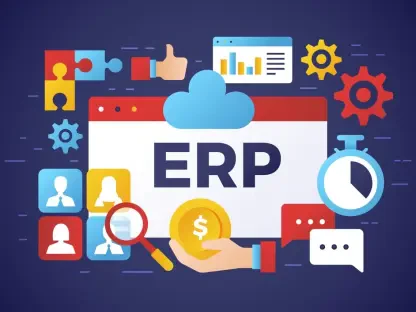Overview of a Transformative Industry
In the dynamic realm of business-to-business (B2B) software-as-a-service (SaaS) for robotics, a staggering statistic emerges: over 60% of manufacturing and logistics firms are now integrating cloud-based robotic management systems to boost efficiency. This surge underscores a pivotal shift in industrial operations, where B2B SaaS robotics firms are becoming indispensable partners. These companies deliver scalable software solutions that enable seamless control, monitoring, and optimization of robotic systems across various sectors, addressing the pressing need for automation in an increasingly competitive landscape.
The industry stands at a critical juncture, driven by rapid technological advancements and a growing appetite for streamlined processes. Key players in this space are leveraging cloud infrastructure to offer innovative tools that reduce downtime and enhance productivity. As demand for automation solutions continues to rise, this niche market is carving out a significant role in transforming traditional industries into agile, tech-driven ecosystems.
This report delves into the strategic marketing approaches that propel growth for B2B SaaS robotics firms. It examines how these companies navigate unique challenges, harness cutting-edge tactics, and position themselves for sustained success in a specialized field. From personalized campaigns to regulatory compliance, the analysis offers a comprehensive look at the forces shaping their trajectory.
Understanding the B2B SaaS Robotics Landscape
The B2B SaaS robotics sector focuses on providing cloud-based platforms that empower businesses to manage robotic systems with precision. Primarily serving industries like manufacturing, warehousing, and logistics, these solutions facilitate real-time data analysis, predictive maintenance, and operational scalability. The ability to integrate seamlessly with existing hardware and software ecosystems makes these tools vital for companies aiming to modernize without overhauling infrastructure.
Significant growth in this market is fueled by the urgent need for automation amid labor shortages and rising operational costs. Leading firms are innovating with features like machine learning algorithms for robotic optimization and IoT connectivity for enhanced monitoring. The competitive landscape includes established tech giants and agile startups, all vying to capture market share in a space projected to expand substantially over the next few years.
Technological progress, such as edge computing and 5G integration, further amplifies the potential of these SaaS platforms. As businesses prioritize efficiency and adaptability, the demand for tailored robotic management solutions is reshaping industrial priorities. This convergence of technology and need positions the sector as a cornerstone of modern industrial strategy.
Key Marketing Strategies for Growth
Hyper-Personalized Marketing with AI and Data Analytics
B2B SaaS robotics firms are increasingly turning to artificial intelligence and data analytics to craft highly personalized marketing campaigns. By tapping into data from customer relationship management (CRM) systems and tracking user interactions, these companies identify specific pain points and preferences of distinct buyer personas, such as operations managers or procurement officers. Tailored messaging that addresses individual client needs becomes a powerful tool in cutting through the noise of a crowded market.
This one-to-one communication approach significantly enhances engagement levels, particularly in a sector where decision-making processes are intricate and involve multiple stakeholders. AI-driven insights allow marketers to predict client behavior, refining outreach efforts to resonate on a personal level. The result is a marked improvement in conversion rates, as prospects receive relevant solutions at critical junctures in their buying journey.
Such precision marketing also builds stronger connections by demonstrating an understanding of complex industry challenges. When potential clients encounter content or campaigns that speak directly to their operational hurdles, trust in the provider grows. This strategy proves especially effective in a field where relationships often precede transactions by months.
Content Marketing and Thought Leadership
Establishing credibility through content marketing remains a cornerstone for B2B SaaS robotics firms facing lengthy sales cycles, often spanning three to six months. High-value materials like whitepapers, detailed case studies, and interactive webinars serve as educational resources that highlight the tangible benefits of adopting cloud-based robotic solutions. These assets address specific concerns, such as integration challenges or return on investment, fostering informed decision-making.
Positioning as thought leaders in robotics automation elevates brand perception beyond mere product offerings. By sharing insights on industry trends, technological innovations, and best practices, firms create a reputation for expertise that resonates with prospective clients. This authority not only attracts attention but also nurtures long-term relationships, even when immediate sales are not secured.
Moreover, consistent delivery of valuable content keeps companies top-of-mind throughout extended evaluation periods. Engaging formats, such as live demonstrations or expert panel discussions, further amplify impact by offering practical takeaways. This approach ensures that when clients are ready to commit, the brand is already a trusted name in their consideration set.
Niche-Specific SEO Strategies
Search engine optimization tailored to the robotics SaaS niche plays a pivotal role in driving qualified traffic to company platforms. By focusing on high-intent, long-tail keywords like “cloud-based robotic SaaS for manufacturing,” firms attract prospects actively seeking specific solutions. This targeted approach minimizes wasted ad spend and connects with users at advanced stages of the buyer journey.
Technical SEO elements, such as optimizing website load times and ensuring mobile responsiveness, are equally critical in this strategy. A seamless user experience directly influences search engine rankings, making it easier for potential clients to find and interact with content. Given the technical nature of the audience, a polished digital presence signals professionalism and reliability.
Beyond visibility, these efforts reduce customer acquisition costs by honing in on a precise audience. Analytics-driven adjustments to keyword strategies and site performance keep campaigns aligned with evolving search behaviors. As a result, firms maximize reach while maintaining relevance in a highly specialized market.
Challenges in Marketing for B2B SaaS Robotics Firms
Marketing in the B2B SaaS robotics space comes with distinct obstacles, including prolonged sales cycles that test patience and resources. With deals often taking months to finalize due to multiple decision-makers, firms must sustain engagement over extended periods without losing momentum. This requires a delicate balance of persistence and value delivery to avoid overwhelming prospects.
The niche nature of the audience adds another layer of complexity, as marketing efforts must resonate with a limited but highly discerning group. Demonstrating clear, measurable value—such as cost savings or productivity gains—becomes essential to justify investment in specialized software. Additionally, with budgets typically around 8% of annual recurring revenue, allocating funds effectively across channels poses a constant challenge.
To address these issues, companies adopt adaptive strategies like phased nurturing campaigns that align with client timelines. Investing in deep market research ensures messaging speaks to specific industry needs, while flexible budget management allows for experimentation with high-impact tactics. Overcoming these hurdles demands agility and a relentless focus on client-centric solutions.
Navigating the Regulatory and Compliance Landscape
Regulatory considerations significantly shape the operations and marketing of B2B SaaS robotics firms, particularly around data security and privacy. With software often handling sensitive operational data, adherence to standards like GDPR or industry-specific protocols is non-negotiable. Ensuring robust cybersecurity measures protects both the provider and client, forming a critical trust foundation.
Compliance with integration standards for robotic systems also influences how solutions are positioned in the market. Clients in heavily regulated sectors, such as manufacturing, require assurance that software meets stringent safety and operational guidelines. Marketing communications must transparently convey these commitments to mitigate concerns and build confidence in the product.
Effective strategies in this area involve highlighting compliance as a competitive advantage. Case studies or certifications showcased in campaigns reassure prospects of reliability and due diligence. By weaving regulatory adherence into the brand narrative, firms not only address client apprehensions but also differentiate themselves in a trust-sensitive environment.
Future Trends in Marketing for B2B SaaS Robotics
Looking ahead, marketing strategies for B2B SaaS robotics firms are poised to evolve with deeper integration of artificial intelligence. Predictive analytics and automated content personalization will likely become standard, enabling even more granular targeting of client segments. This shift promises to refine how firms anticipate and address emerging needs in real time.
Content formats are also expected to diversify, with immersive technologies like augmented reality offering new ways to demonstrate software capabilities. Interactive tools could simulate robotic system performance, providing hands-on value without physical demos. Such innovations will cater to a tech-savvy audience eager for engaging, practical insights.
Global demand for automation, coupled with economic fluctuations, will further influence marketing approaches from this year through 2027. Adapting to changing client expectations—such as sustainability or cost-efficiency—will require agile campaigns that reflect broader industry shifts. Emerging technologies in robotics, like autonomous decision-making, may also redefine the solutions marketed, pushing firms to stay ahead of the curve.
Reflecting on Insights and Next Steps
Looking back, this analysis illuminated how B2B SaaS robotics firms harnessed marketing to carve out a competitive edge in a specialized field. The exploration of hyper-personalized campaigns, thought leadership content, and niche SEO revealed a sophisticated blend of precision and education that drove client engagement. These strategies tackled long sales cycles and niche audience challenges with remarkable focus.
Moving forward, firms should prioritize investment in AI-driven tools to enhance personalization at scale, ensuring every interaction delivers maximum relevance. Experimenting with innovative content formats can further captivate technical audiences, while continuous SEO refinement will sustain digital visibility. Building on compliance as a trust signal in marketing narratives also emerged as a vital step for differentiation.
Ultimately, success hinges on aligning marketing with the evolving demands of industrial automation. The path ahead calls for a commitment to adaptability, leveraging data insights to anticipate market shifts. By focusing on these actionable pillars, B2B SaaS robotics companies can transform challenges into opportunities, securing growth in a transformative era.









